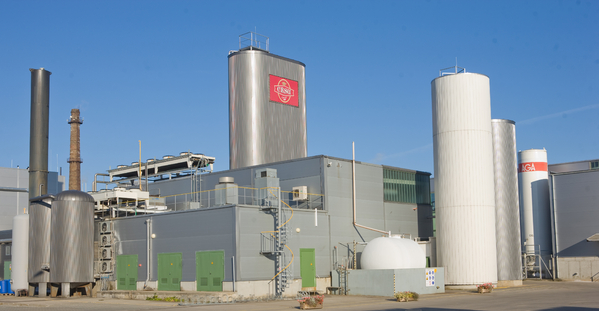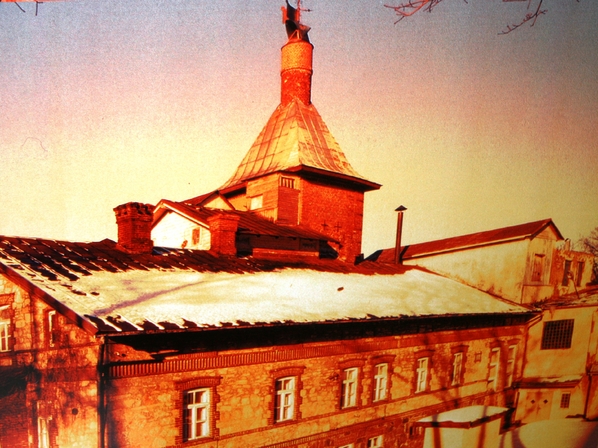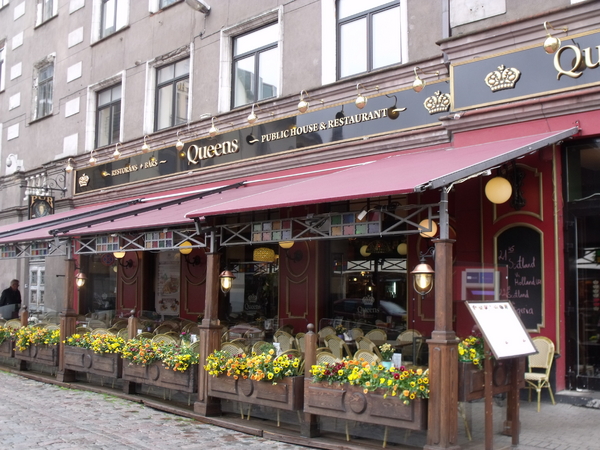Beer booms in Baltic but stout hard to find
Added: Monday, June 23rd 2014

Latvia has witnessed so many unwelcome visitors over the centuries – Germans, Lithuanians, Poles, Russians and Swedes to name just a few – that it’s not surprising local people have needed a calming beer or two. Latvians have been brewing for centuries, aided by the expertise of some of the invading countries.
One of the country’s main breweries, Cesu Alus, opened in 1590 in a castle in the town of Cesis, using barley and hops grown in the vicinity. At a time when there was little or no scientific understanding of how beer was made, the first brews were made by spontaneous fermentation, using wild yeasts in the atmosphere in the manner of Belgian lambic brewing.
Eventually the brewery moved to more conventional methods, using brewers’ yeast cultures. The beers were warm-fermented ales until the development of lager brewing in the 19th century. “Alus” is the Latvian word for beer and its historic connection with ale is clear to see.
In the 17th century, when major parts of Latvia were over-run by Sweden, the Cesu Alus plant had to be relocated to a bigger part of the castle to brew sufficient beer to meet the prodigious thirsts of the Swedes. In 1828 the brewery came into the hands of the local baron, Graf Emanuel Zievers, and his ownership is commemorated by the only ale in the brewery’s modern portfolio, Grafs fon Ziverss (parts of the old brewery can still be seen in the town: see below). As the power of the nobility waned with the arrival of a modern market economy, the brewery was bought by a group of entrepreneurs who formed a joint stock company and developed a broader range of beers using the new technologies introduced by the lager revolution in western and central Europe.
But Latvia did not entirely lose its ales. Along with the other Baltic States, it became an important market for the strong Russian Stouts brewed in London and exported to Russia and the Baltic by a company run by a Belgian called Albert Le Coq: a brewery in Tartu in Estonia still bears his name and continues to brew Porter and Stout.
Brewing in the Baltic region was a hazardous affair in the 20th century. The countries were invaded by the Nazis in World War Two, but there was no respite when the war ended as the Baltic States were absorbed into the Soviet Union and breweries were nationalised. But the Soviet authorities did invest in breweries and Cesu Alus was able to quadruple its production.
Following the collapse of the Soviet Union, Cesu Alus once again became a joint stock company and in 1995 it was bought by the Finnish group Olvi, which makes both beer and soft drinks. Olvi now has breweries in all three Baltic States – including Le Coq in Estonia – and a further plant in Belorus.

In 2000 Olvi invested 400 million euro in a brand-new plant for Cesu Alus. The brewery is now the biggest in Latvia as Carlsberg has closed its Aldaris brewery in Riga and moved all production to Lithuania. Since 2000, volumes at Cesu Alus have grown to 70 million litres a year and the brewery’s market share has increased from just 3 per cent to 30 per cent.
The modern German-built Steinecker plant is based on the German model of mash mixer, lauter tun, copper and whirlpool and it can handle 11 brews a day. Grain is imported from Finland, Germany and Lithuania. German Magnum and Perle hop varieties are blended with Czech Saaz. Local water is hard but iron and sulphates are removed to make it suitable for lager brewing.
The premium beers are impressive and are lagered for 60 days. This is long by modern standards, when so many so-called lager beers are produced as fast as ales. Sixty days places the Cesu Alus beers midway between Pilsner Urquell (40 days) and Budweiser Budvar (90).
The main beer, Premium, 5.2%, has a rich malt and grassy hop aroma (Magnum and Perle), with juicy malt and hop resins in the mouth, and a long finish balanced between toasted malt and pine-like hops. Premium Amber is a dark version of the same beer, brewed with Munich malt. It has a pear fruit aroma and palate with a dry finish in which roasted grain, fruit and light hop resins combine.
The most impressive version of Premium is a new unfiltered, version that meets the demands of younger consumers for more natural products. It has a hazy gold colour, with pronounced juicy malt and tangy hop resins on aroma and palate. A 4.2% Pilsner is rooted in the Czech style, with a typical Pils nose of toasted malt and spicy hops, followed b a rich malt palate balanced by hop resins, and a dry, hoppy and malty finish.
Grafs fon Ziverss Ale is brewed for Cesu Alus by the Le Coq Brewery in Estonia. The warm-fermented beer has a plums and apricot aroma, with a bittersweet palate and a dry, hoppy finish. It’s brewed with pale malt, wheat malt, carapils and caramel: the hops are not revealed.
The only sign of a Baltic Porter at Cesu Alus is a Winter Porter, which, as the name suggests, is a seasonal beer. It seems a visit to Tartu’s Le Coq Brewery will be necessary to worship at the shrine of this fascinating but sadly reduced historic style.
*The Queens, a British-style pub in the Latvian capital, Riga.






